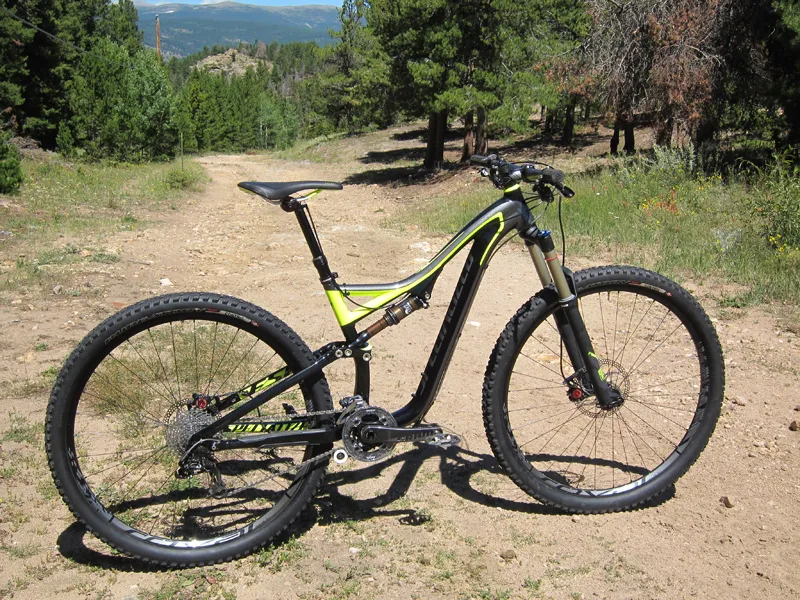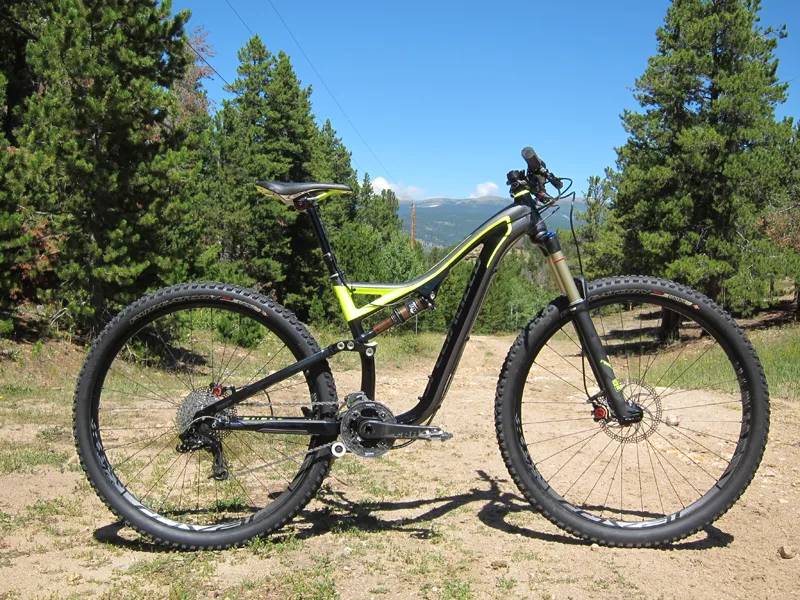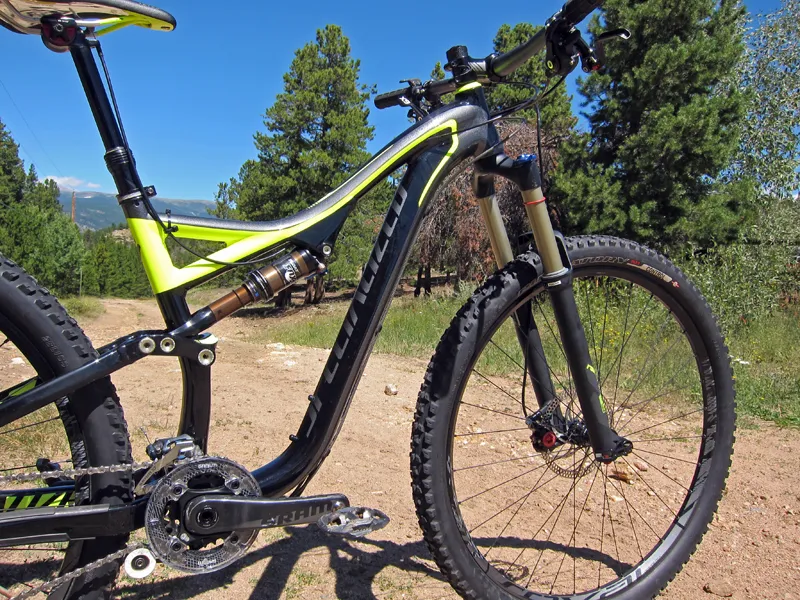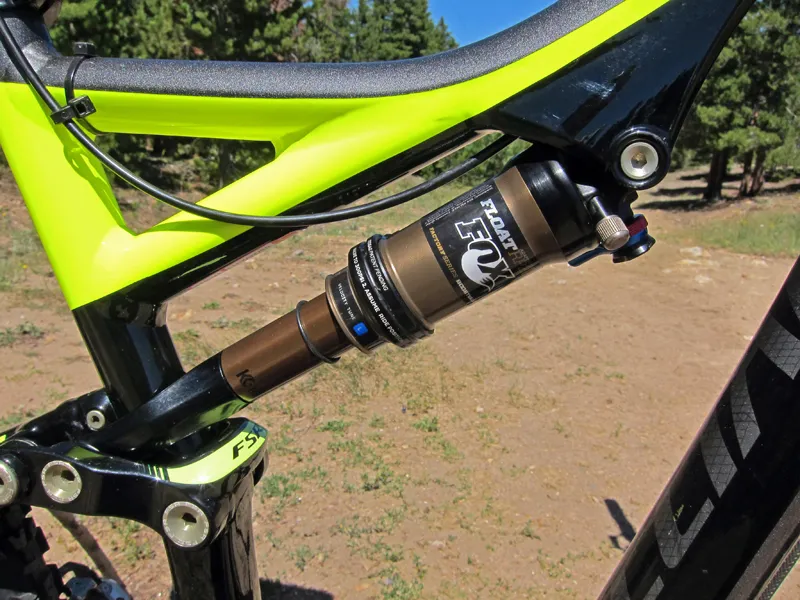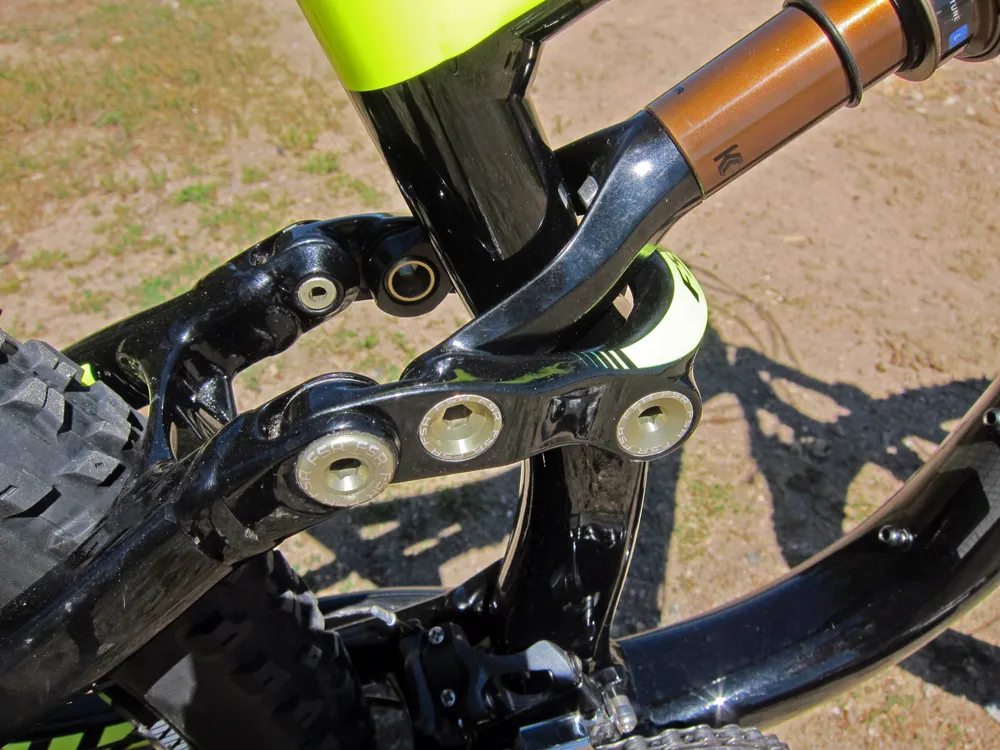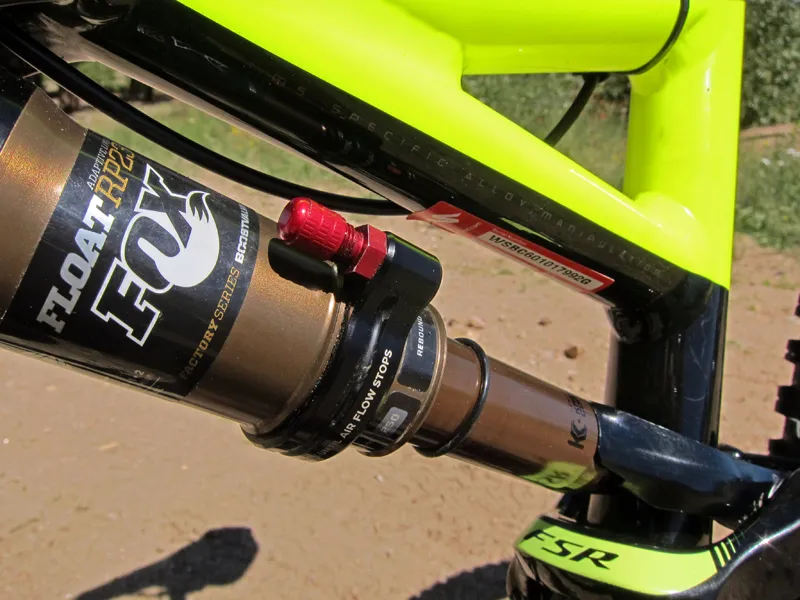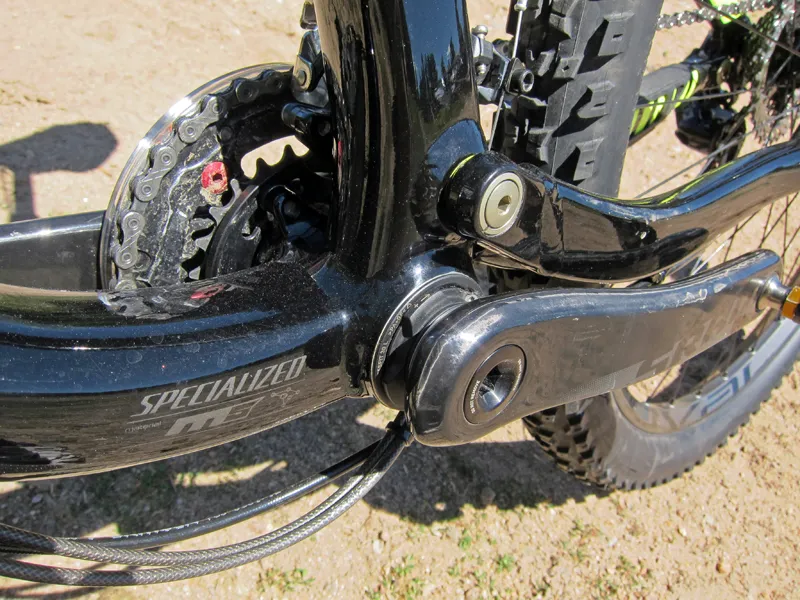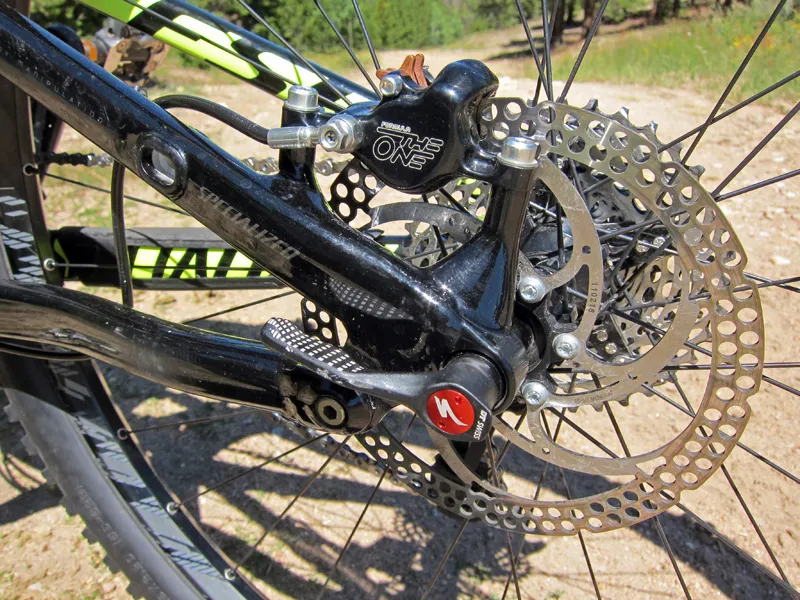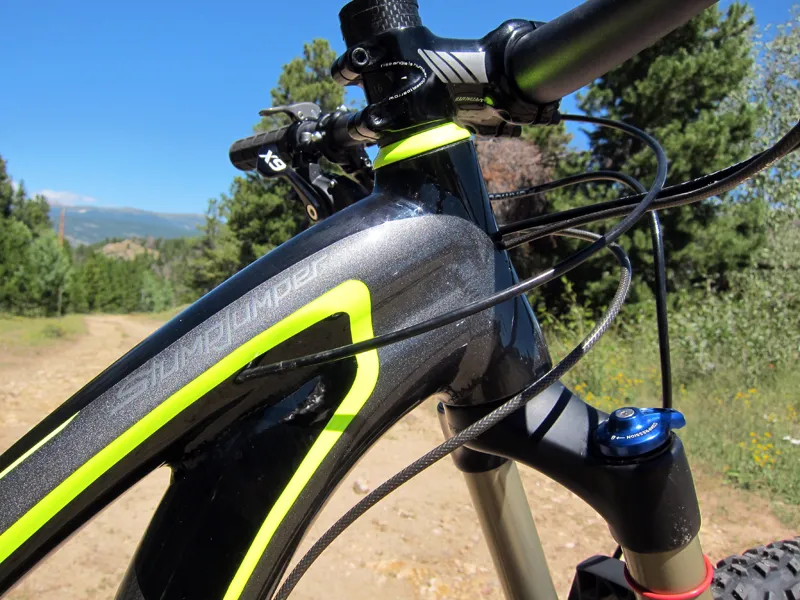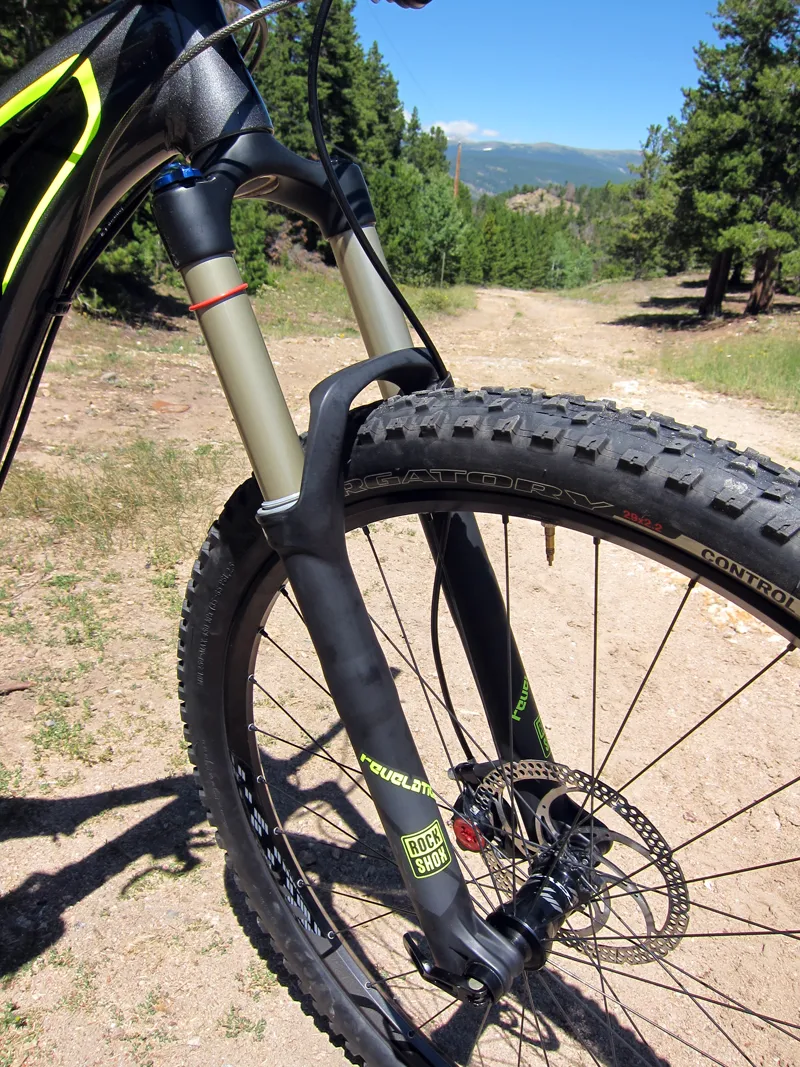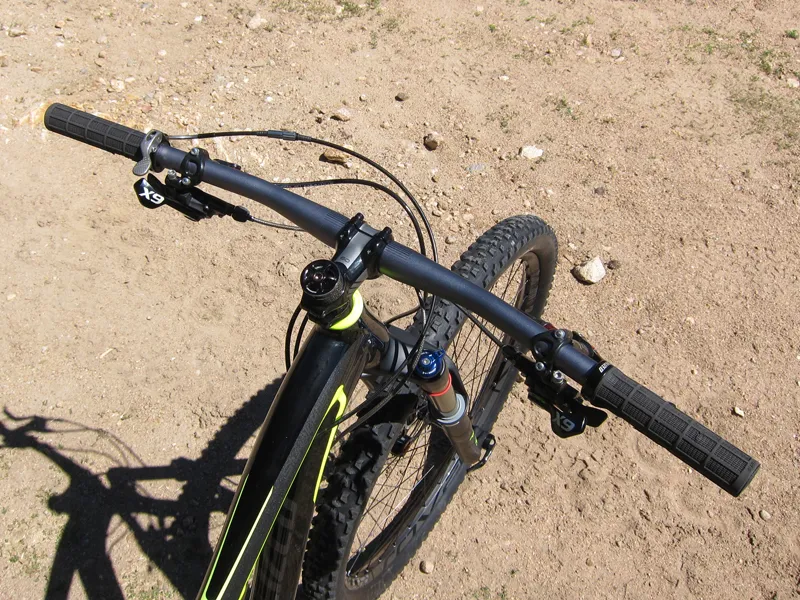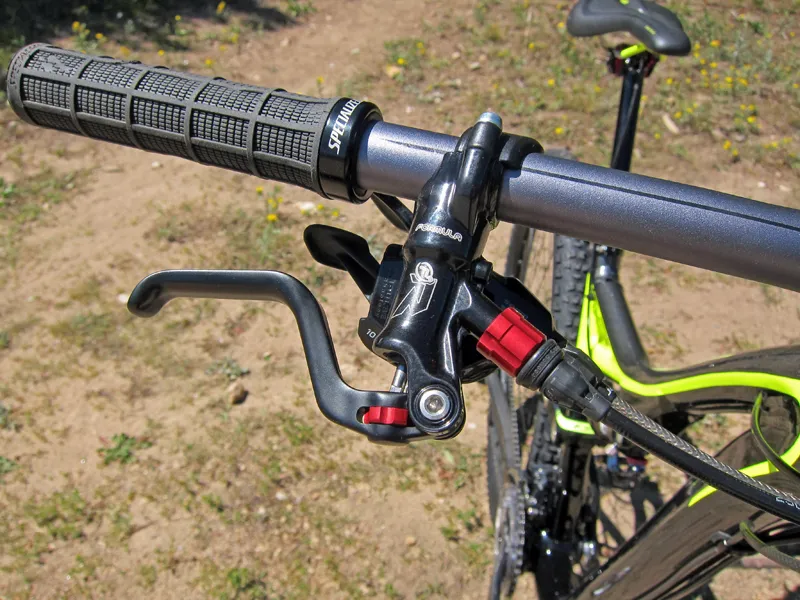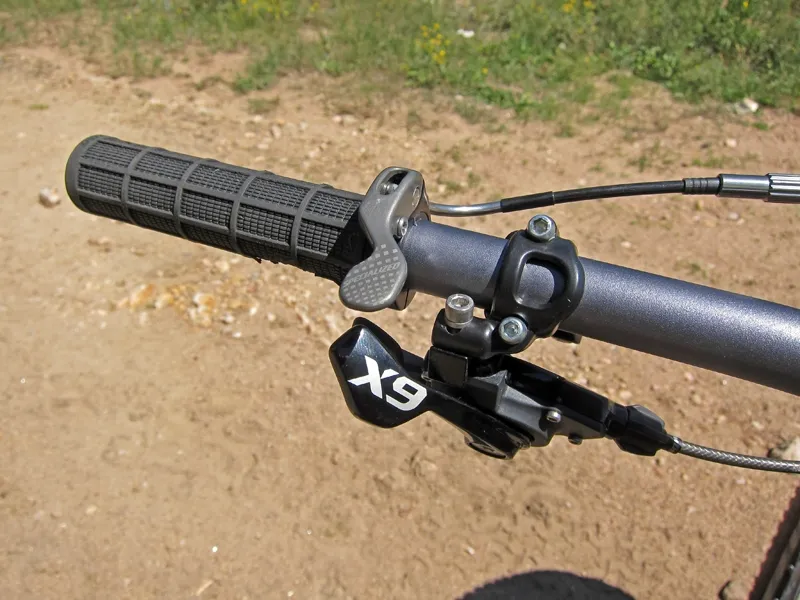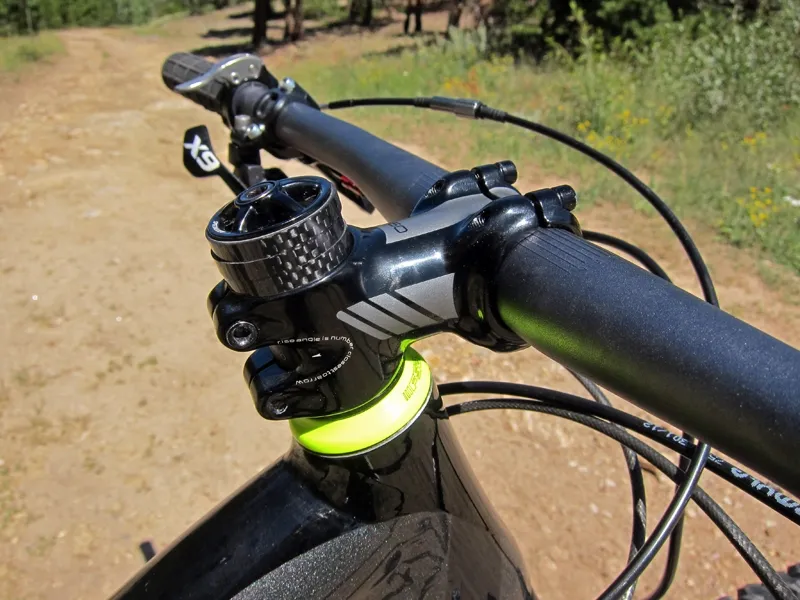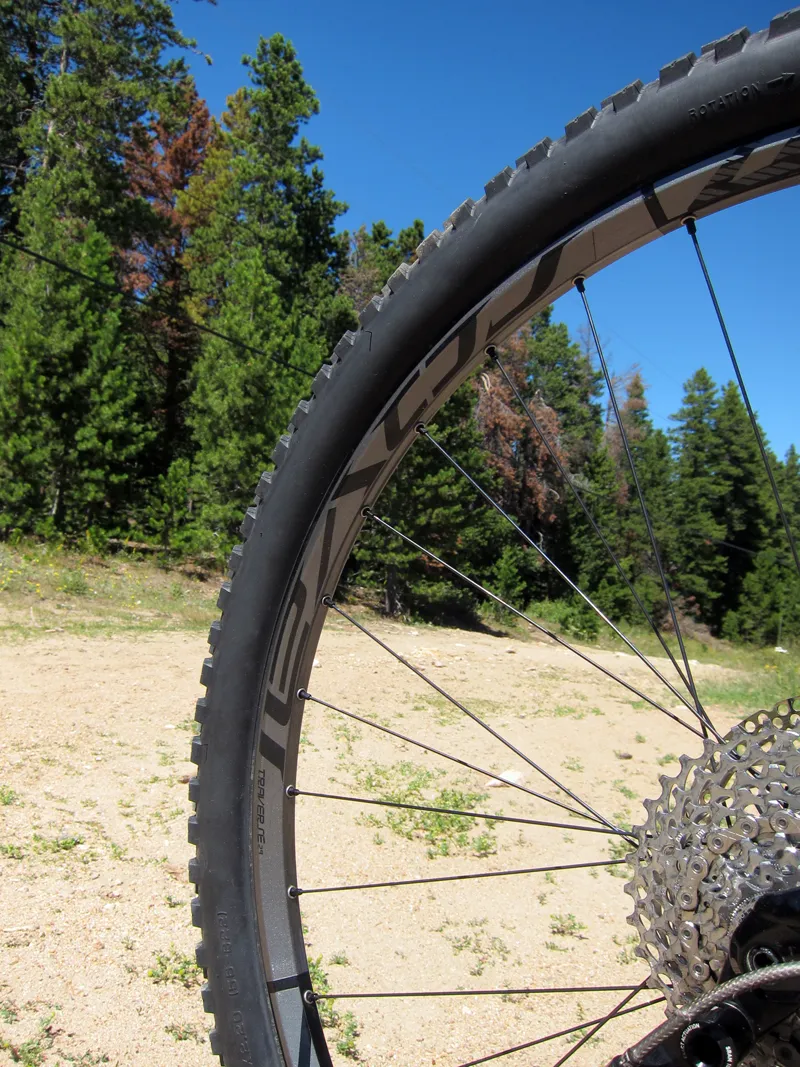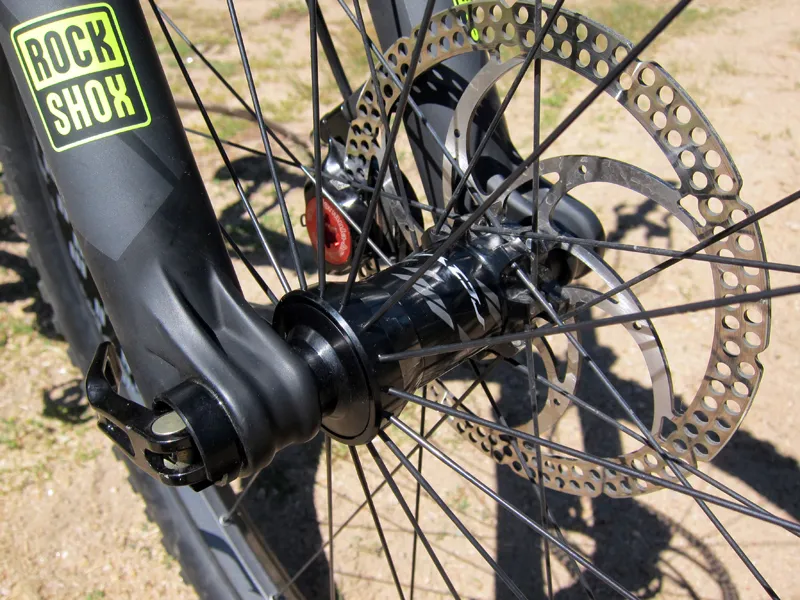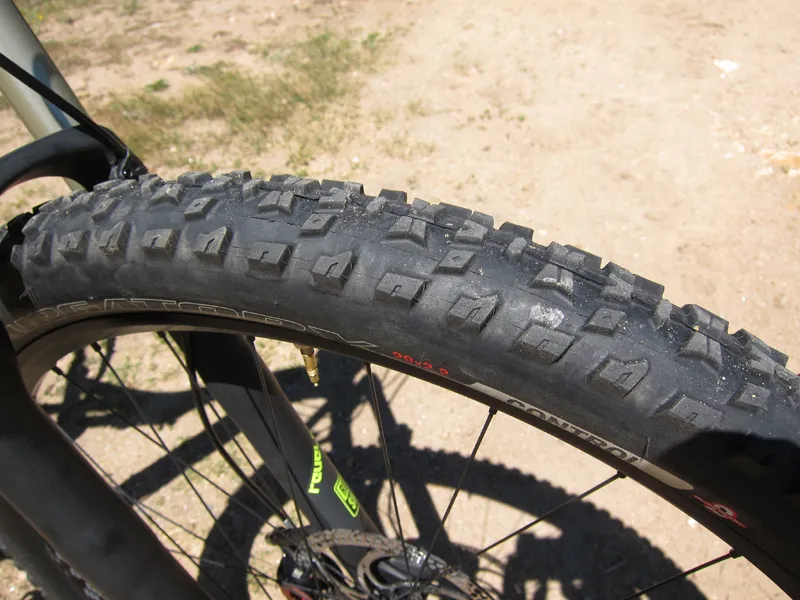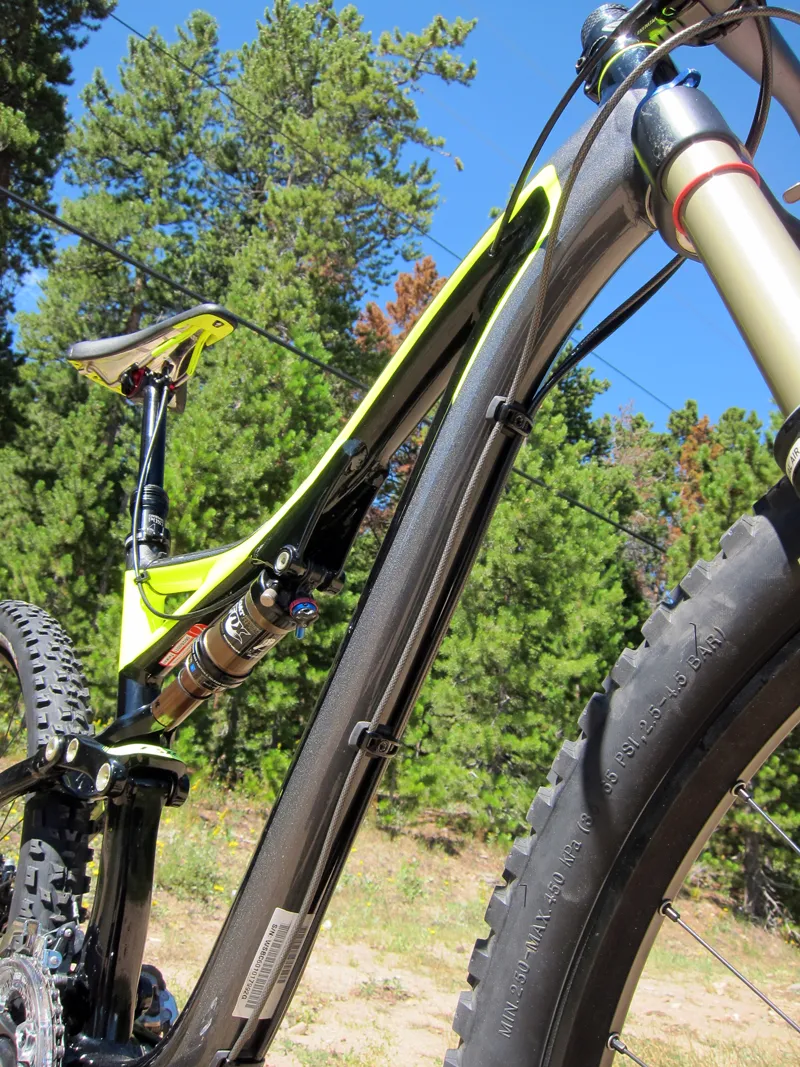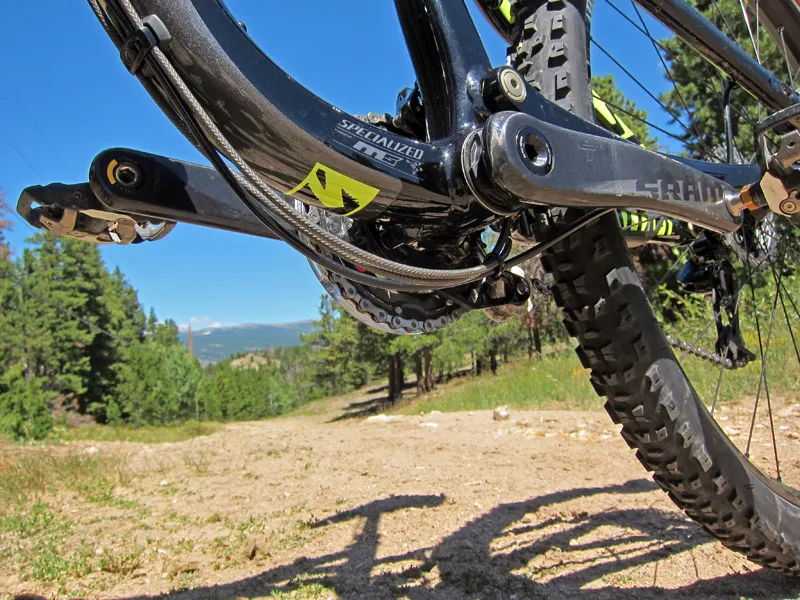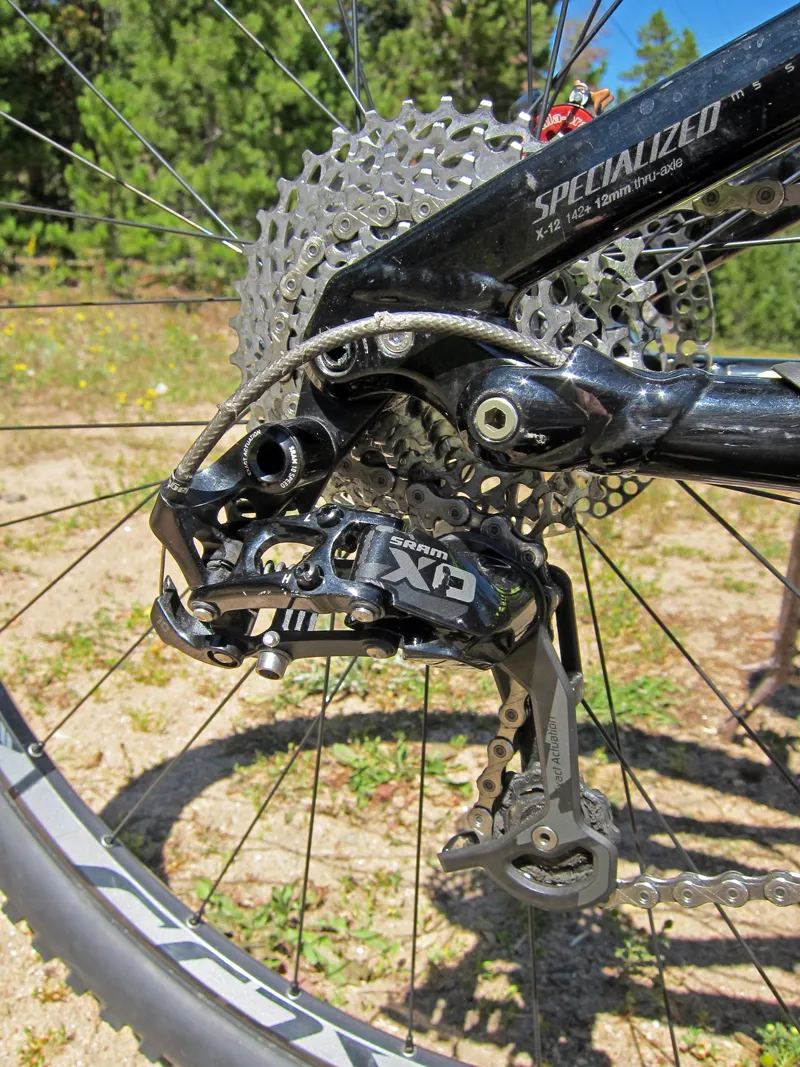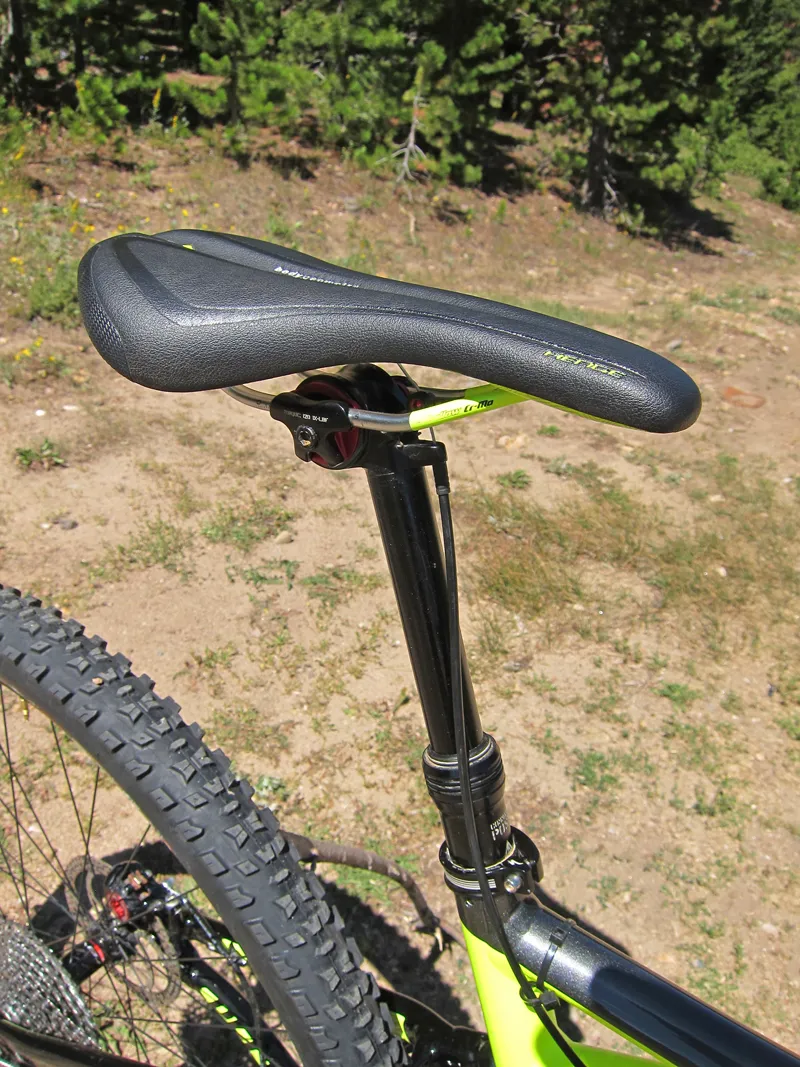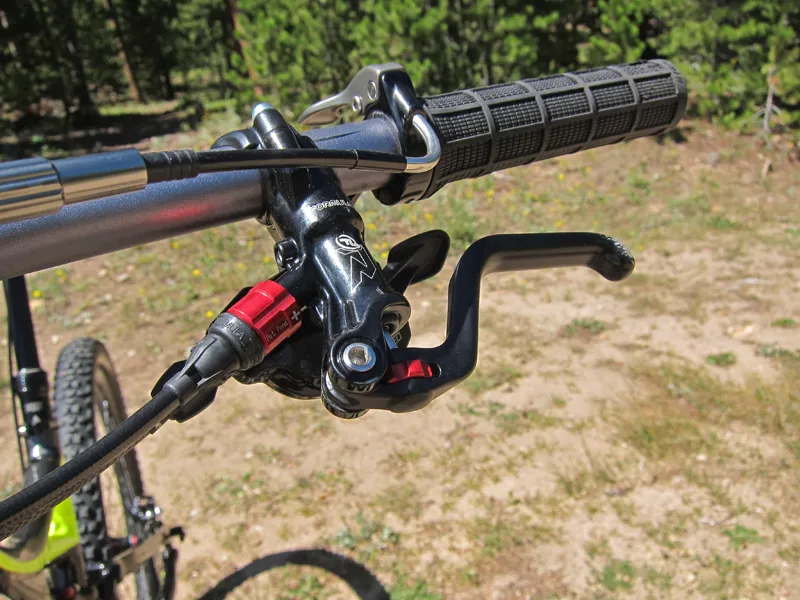29in wheels were once considered appropriate only for hardtails and shorter-travel cross-country machines but the latest longer-travel machines are demonstrating what many already knew: big wheels are awfully fun for trail bikes, too. Here, Specialized take the idea and give it the 'EVO' treatment for an especially fun and abuse-friendly ride. The Stumpjumper FSR Expert EVO 29 may be considered forward thinking at the moment but if that's the case, we certainly like where things are going.
Ride & handling: Awesome descender and pretty good to pedal, too
The Specialized Stumpjumper FSR Expert EVO 29 is at its best when attacking moderately technical descents or ripping along any fast, rolling terrain where you can keep your momentum. As usual, the big wheels – and generously sized 2.2in-wide tires – steamroll over smaller obstacles and carry speed in a way 26in hoops can't match, but it's the suspension and frame geometry that really make it a joy to ride when the ground points downward.
Specialized stick with their tried-and-true FSR four-bar rear end here, bumping things up to 135mm of travel and matching it to RockShox's excellent 140mm-travel Revelation RL 29 fork. Both are impeccably tuned and offer great performance – small bumps are mercilessly squashed, bigger drops are handily neutralized, bottom-out is appropriately firm and the midstroke is a sweet and lively zone of activity that never feels too bogged down or artificially firm.
Some of the credit should go to the excellent Fox Racing Shox RP23 rear shock. The Kashima coating genuinely does tangibly reduce stiction over trail chatter while the new Adaptive Logic configuration goes a long way towards perking up the often-dead and overly isolating feel that can sometimes come with Specialized's FSR rear ends.
Not to be overlooked, either, is the rear shock's new Specialized-exclusive Autosag feature, which is flat-out brilliant in its simplicity – just inflate the shock to 50psi over your body weight (in pounds), sit on the bike in your riding kit, then depress the extra red valve until no more air comes out and like magic, you're at about 25 percent sag. Granted, some riders might prefer a bit more or less than that depending on ride preferences but we found it to be spot-on for general trail riding.
Our EVO variant's more progressive geometry only furthered our test bike's impressive downhill capabilities. As compared to standard Stumpjumper FSR 29ers, the EVO boasts a slacker 68° head tube angle, a few millimeters more bottom bracket drop, 10mm less reach and a slightly longer wheelbase – all of which give the EVO a stable and confident feel in fast corners. In fact, it's so good on fast, techy downhills that we managed to drop one of our decidedly more DH-proficient colleagues on a rocky descent that was familiar to both parties – bonus points for sure.
Lest you start to think the EVO is only good for descending, though, rest assured that it's a pretty capable climber, too. Seated ascending in the inner chainring rarely had us reaching for the rear shock's ProPedal lever and even out-of-the-saddle climbs were reasonably efficient for short stints. Faster or gentler grades done in the big ring are best tackled with the rear shock platform switched on, though, as big surges there are otherwise met with a discouraging level of rear-end squat.
Surprisingly, low-speed maneuverability was quite good even with the bike's generous wheelbase and monster truck-sized wheels. While obviously not as nimble as a short-travel 26in bike, we still had no issues creeping around tight uphill switchbacks.
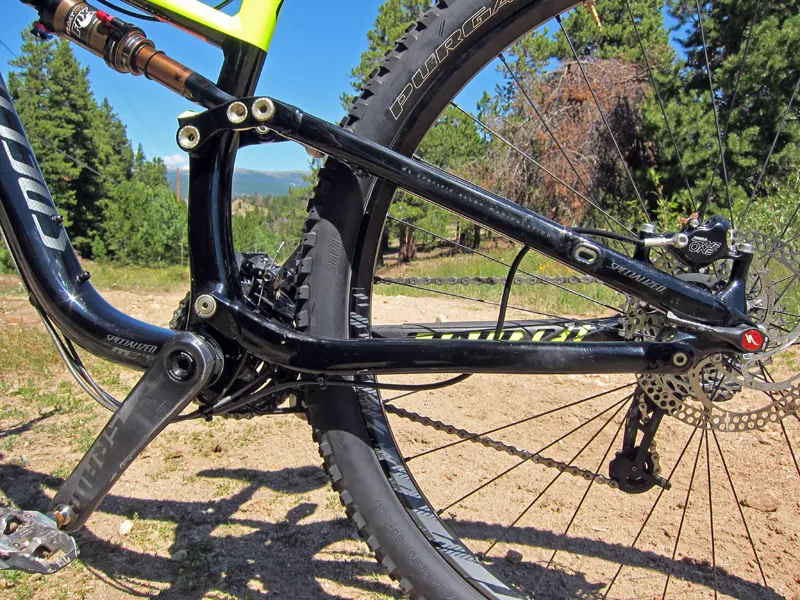
The rear end of the Specialized Stumpjumper FSR Expert EVO 29 was impressively supple over small bumps while still highly controlled on bigger ones
Frame: Progressive geometry and reasonably solid alloy backbone
Save for the lower bottom bracket, slacker angles and slightly longer travel, the Stumpjumper FSR Expert EVO 29 is otherwise identical to the standard alloy version. Actual frame weight is 2,920g (6.44lb, with shock, seatpost collar, rear derailleur hanger and cable guides), making for a reasonably light chassis but leaving enough material to keep things fairly rigid. There's a modest amount of front-end twang when muscling the EVO through the rough but the rear end is impressively predictable with little lateral wag to speak of.
The E5 aluminum alloy tubing is heavily manipulated throughout, including the asymmetrical round-to-rectangular profile seat tube, curved down and top tubes, and multi-bend chain- and seatstays. Save for the tubing, virtually every other aluminum bit is cold forged for durability such as the pivot fittings, dropouts, bottom bracket shell and upper shock link.
The EVO's frame component interfaces befit the bike's forward-thinking geometry. The rear dropouts measure 142mm across and the rear wheel is secured with a DT Swiss-made through-axle, the PressFit 30 bottom bracket includes versatile ISCG05 tabs, the head tube is built around a tapered 1-1/8 to 1-1/2in steerer, the rear brake caliper attaches directly to post mount tabs, and the full-length bolt-on housing guides throughout include dedicated attachment points for the dropper seatpost housing.
Equipment: Brilliant parts spec for maximum fun factor
Specialized's product manager has done an excellent job sweating the details on the Stumpjumper FSR Expert EVO 29. Premium parts are installed where they matter most but more mid-range parts are included elsewhere to save a bit of money without overly sacrificing functionality – all while adhering faithfully to the bike's aggressive personality.
Key bits include the impressively solid and durable Roval Traverse 29 wheels, with wide-format alloy rims pretaped for easy tubeless compatibility and more widely spaced rear flange spacing, and the highly tunable and precise handling RockShox Revelation RL 29 fork with 20mm through-axle dropouts. A SRAM mid-cage X0 rear derailleur is matched to a less expensive (but still competent) X7 front derailleur and X9 shifters, while a custom SRAM crankset with carbon arms offers versatile 24/36T 2x10 gearing.
Custom Formula The One hydraulic disc brakes offer tool-free lever reach and pad contact adjustments, integrated shifter clamps and smart size-specific front and rear rotor diameters. As usual, the Specialized brand name is applied to most of the ancillary bits such as the 720mm-wide low-rise alloy bar, the short angle-adjustable stem, the comfy Henge saddle, burly Purgatory Control tires, size-specific lock-on grips and even the Command Post Blacklite height-adjust seatpost, with its cable-actuated remote lever neatly integrated into the lock-on grip clamp.
Overall, there's little to fault from a functionality point of view. Front and rear shifts are smooth and consistent – even under power – the brakes are immensely powerful and easy to control, the Purgatory tires' big knobs bite confidently into a fairly broad range of ground types, rider position is spot-on and the Command Post is refreshing to see as stock equipment. Chain retention is faultless, too, courtesy of the EVO's Gamut outer bashguard, ISCG-mounted aluminum plate to prevent overshifts and stepped lower roller. Despite the seemingly simple configuration, we never dropped a chain.
Even so, there are still a few nits to pick. Pad retraction on the Formula brakes continues to be disappointingly minimal so caliper positioning has to be dead-on to prevent rubbing, the X9 shift levers feel vague, the tires are grippy but slow-rolling and the seatpost remote feels crude as compared to RockShox's buttery smooth hydraulic switch. Rebound on the Command Post is lightning-fast, too, and the rear through-axle can be tough to undo if you're not diligent with the grease.
Total weight in stock form without pedals for our medium tester is 12.87kg (28.37lb) or 12.56kg (27.69lb) if you take the time to set the wheels up tubeless – not exactly feathery but appropriate for the intended use and still light enough to lug up even a sizeable mountain. You could easily lop over a kilogram off – and at a reasonable cost – by swapping to lightweight tires and a fixed-position saddle if you wanted the EVO to occasionally serve double-duty as a race bike on weekends.
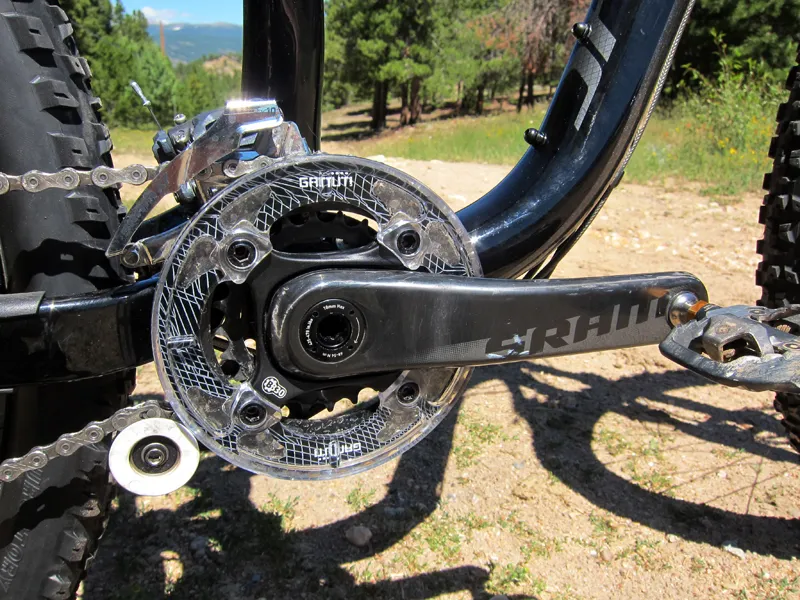
The Gamut bashguard works great when clawing over boulders and logs but also serves to help keep the chain on over rough terrain in concert with the stepped lower roller
